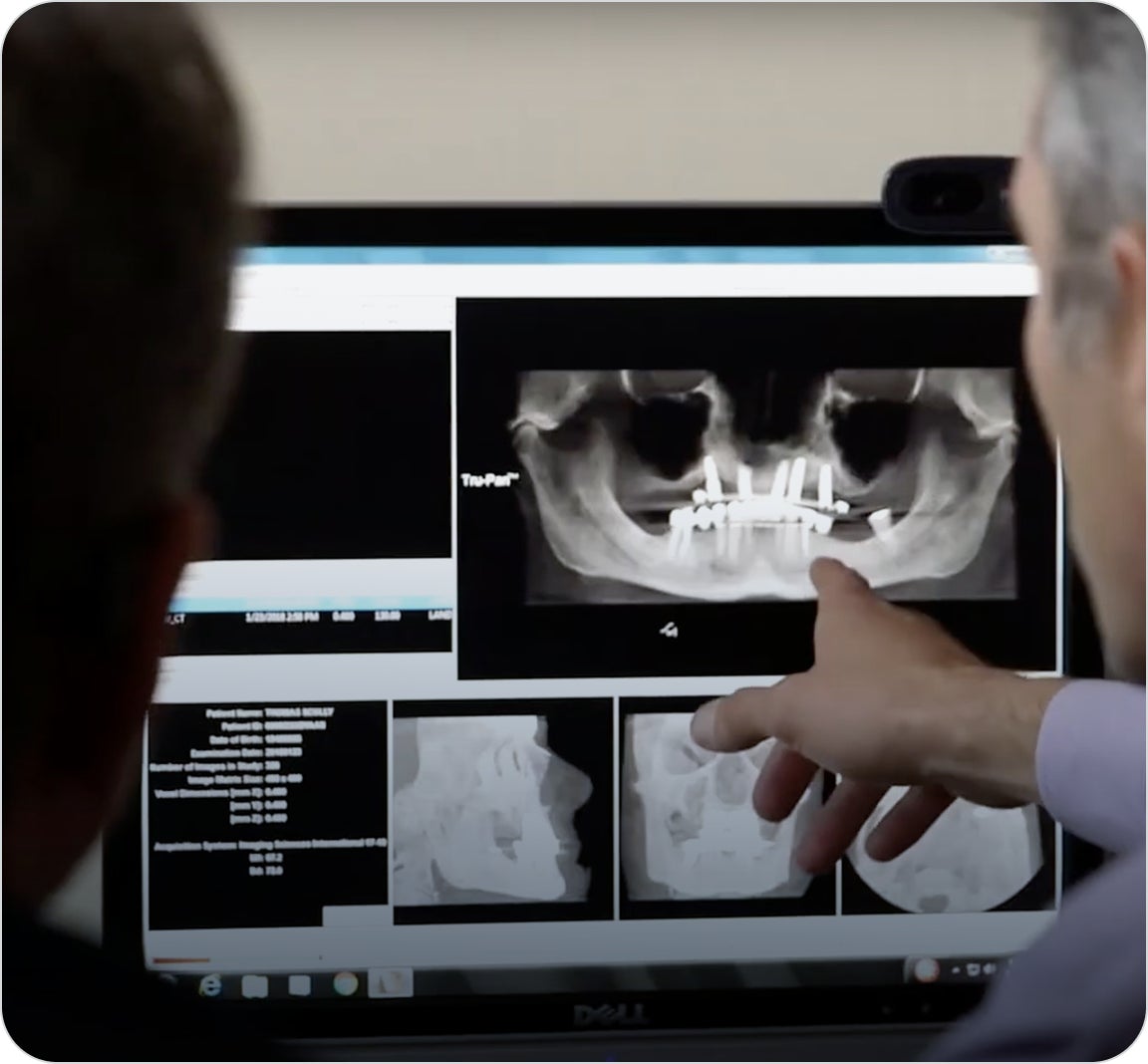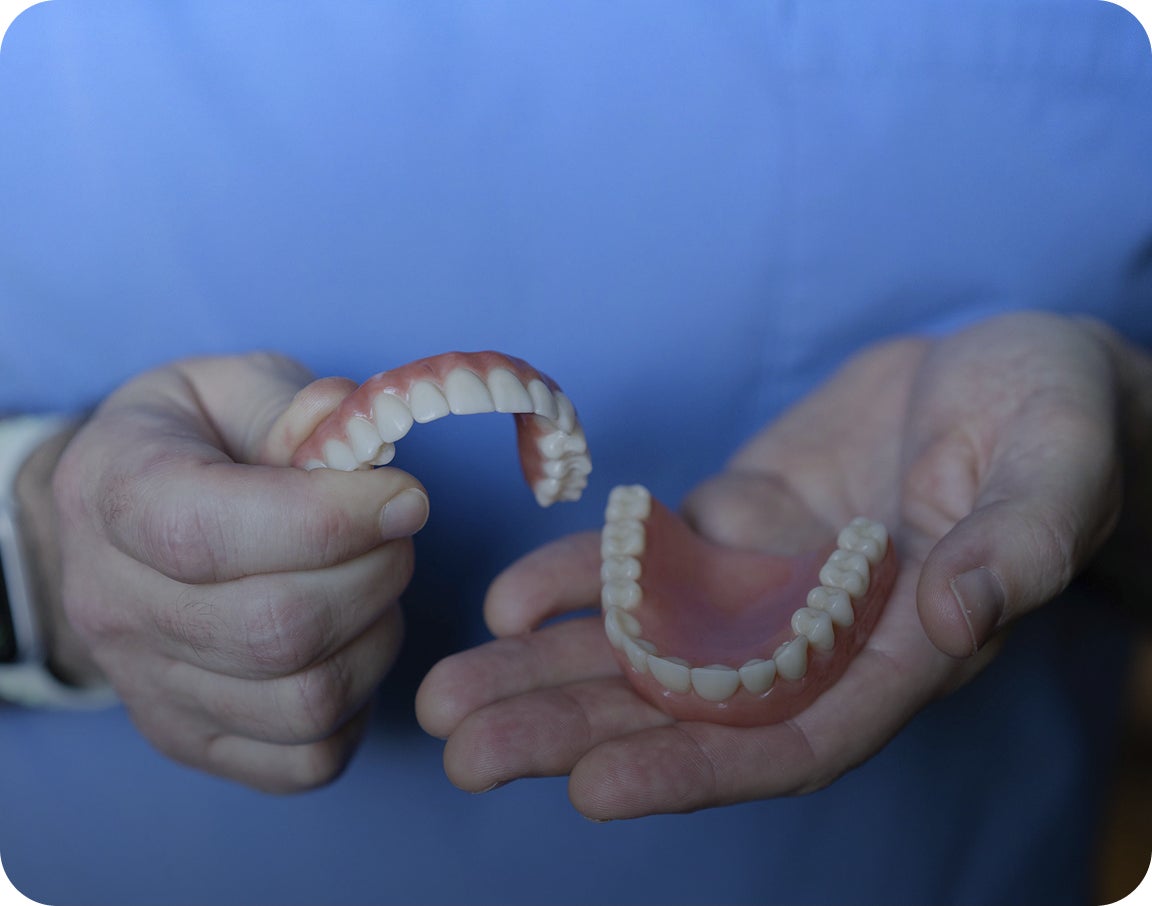Last updated 08.01.2025
How dental implants preserve jawbone health
Discover how dental implants protect jawbone density, prevent bone loss, and preserve your facial structure long-term.


Learn more about Dr. Al Yousuf
Why is jawbone health important?
Consequences of jawbone loss
When teeth are missing, the jawbone beneath them begins to break down due to lack of stimulation. This process, called bone resorption, can lead to:
A sunken or aged facial appearance
Inability to wear dentures
Lack of bone shape and size to place future implants
Difficulty chewing and speaking
Increased risk of further tooth loss
How does tooth loss affect your jawbone?
Your jawbone relies on stimulation from tooth roots during everyday activities like chewing. When a tooth is removed and not replaced with a root-like structure, the bone in that area can begin to shrink. Patients often ask, "What happens to your jawbone after tooth extraction?" The answer: without intervention—typically with a dental implant—bone volume in that area will gradually diminish.
How dental implants preserve jawbone health

How do dental implants stimulate the jawbone?
Dental implants are small titanium posts that are placed into the jawbone where teeth are missing. When you chew, these implants mimic natural tooth roots, stimulating the bone and encouraging it to stay strong and healthy. This is a huge benefit that other tooth replacement options can’t offer.
Understanding osseointegration
Osseointegration is the process by which an implant biologically fuses with your jawbone. Over time, bone cells grow around the implant, anchoring it into place. This fusion stabilizes the implant and helps to maintain bone volume, preventing the kind of bone loss that usually follows tooth extraction.
Dental implant procedure overview: Single tooth replacement
The process to replace a single missing tooth with a dental implant typically includes:

Comprehensive imaging and evaluation
Surgical placement of the implant
A healing period for osseointegration (usually 2–6 months)
Placement of the abutment (connector) and final crown
This step-by-step approach supports implant longevity and helps preserve the jawbone.
Note: If you're receiving a full-arch restoration, your process may look different. Your ClearChoice team will walk you through a personalized plan based on your needs and goals.
Full arch dental implant procedure overview
A typical full arch dental implant process may include:
Comprehensive imaging and evaluation
Surgical placement of the implant
Healing time for osseointegration (2-6 months)
Placement of the abutment or connector and a final crown. This step-by-step approach supports implant longevity and optimal jawbone preservation.
Follow up and check with your ClearChoice provider to find out the exact process your particular situation requires.
Comparing dental implants to other solutions

Dental implants vs. dentures
Dentures can restore the look and function of missing teeth, but they sit on top of the gums and don't integrate with the jawbone. Because of this, bone loss can continue over time.
Dental implants vs. bridges
Bridges rely on adjacent healthy teeth for support and don’t stimulate the underlying bone. Unlike dental implants, they don’t help prevent bone loss or preserve facial structure.
Why dental implants are the best choice for jawbone health
Because implants mimic the role of natural tooth roots, they uniquely stimulate the jawbone. This helps maintain facial structure, support long-term function, and provide a durable, lasting solution for tooth loss.
Evaluating jawbone for dental implants

When is bone grafting necessary?
If you’ve experienced bone loss because of long-term missing teeth, you may need a bone graft before receiving implants. Bone grafting brings back volume to the jaw, making it strong enough to support a dental implant.
Can my jaw reject an implant?
True implant rejection is rare. However, implants can fail to integrate properly due to infection, insufficient bone, or chronic conditions. With good oral hygiene and proper care, most patients experience long-term success.
Long-term facial benefits of dental implants
Dental implants do more than maintain oral function. They potentially help:
Retain your jawline and prevent facial collapse
Support your cheeks and lips
Prevent the sunken appearance linked to missing teeth and bone loss
What to expect during recovery and aftercare
Healing time after dental implants
Healing varies by patient, but typical recovery includes:
1-2 weeks for initial healing
2-6 months for full osseointegration. Following post-operative instructions is essential for the best outcome.
Maintaining jawbone health post-implant
To support long-term jawbone preservation:
Maintain excellent oral hygiene
Avoid or greatly reduce tobacco and alcohol use
Attend regular follow-up visits. These practices promote continued dental bone regeneration and implant success.
Long-term benefits of implants
Dental implants offer lasting results, including:
Prevention of further bone loss
Restoration of natural chewing and speech
Maintenance of facial aesthetics
With proper care, implants can last decades

How much do dental implants cost?
Costs vary depending on your location, treatment complexity, and whether additional procedures like bone grafting are needed. While implants can be more expensive up front, they deliver significant long-term value.
Does insurance cover dental implants?
Be sure to check with your insurance team to see if any portion of your treatment can be reimbursed. Though ClearChoice centers do not take insurance, some insurance companies will reimburse a claim. If you are looking at full arch treatment, please ask the doctor about Insurance Assurance, as there might be an available discount for your treatment.
Financing options available
ClearChoice has third-party financing options to help make treatment more accessible. You may qualify for affordable monthly payments to manage costs more easily.
Book a consultation to meet your full care team, all in one location.
Dental implants for jawbone health FAQs
Can dental implants stop bone loss?
Yes. Implants act like natural roots, providing the stimulation your jawbone needs to stay strong and healthy.
What if my jawbone is too thin for implants?
In many cases, bone grafting can help rebuild the bone to allow for successful implant placement—but it's not always an option for everyone. Your doctor will evaluate your specific case to determine the best approach.
Are dental implants better than dentures for jawbone health?
Yes. Unlike dentures, implants bond with the jawbone to help prevent further deterioration and support long-term health.



